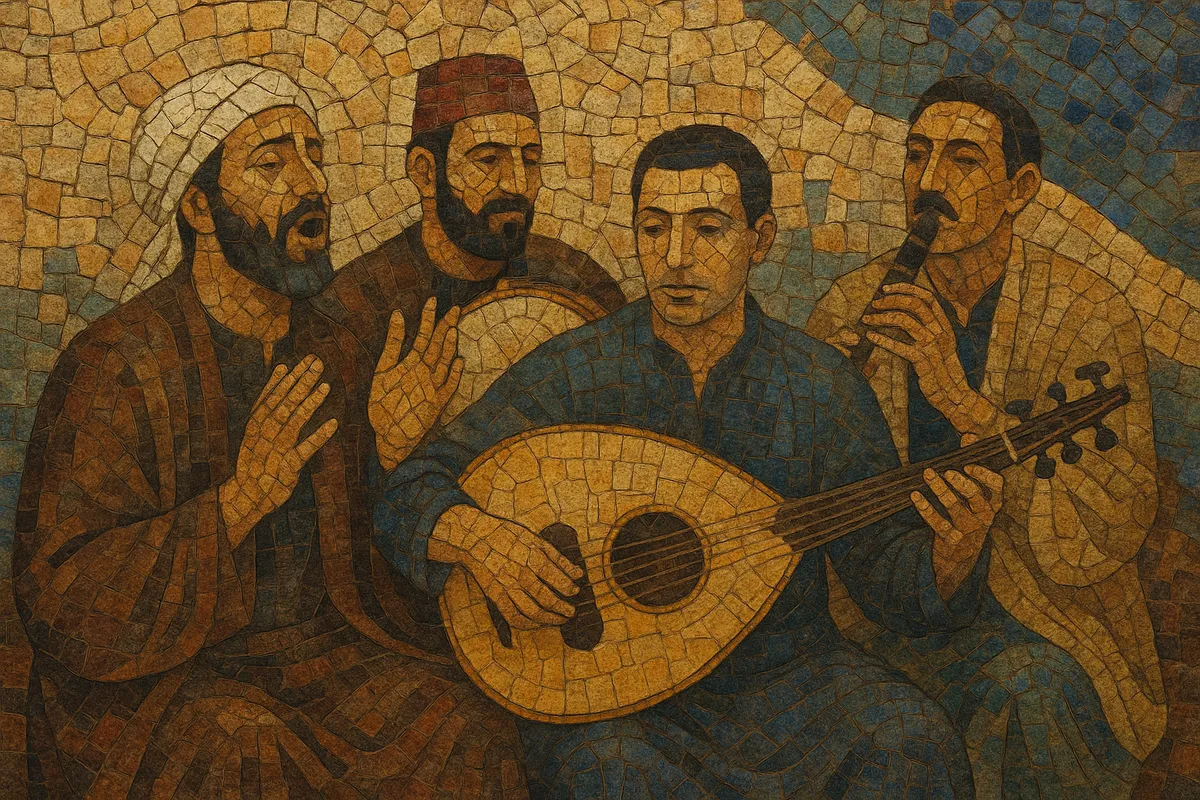Zajal is a tradition of strophic, semi-sung vernacular Arabic poetry whose roots go back to medieval al-Andalus. It is performed in colloquial dialects (rather than classical Arabic), set to repeating melodies and percussive iqaʿ (rhythmic cycles), and relies heavily on witty wordplay, refrains, and audience participation.
Two large currents are commonly recognized: the Andalusi-Maghrebi strophic song (closely related to the muwashshah) and the Levantine improvisatory duel-poetry practiced in Lebanon, Palestine, Syria, and Jordan. In both currents, zajal balances crafted poetic forms with live improvisation, often unfolding as call-and-response between lead poets and a chorus, accompanied by traditional instruments (riqq, daff/derbakeh, oud, mijwiz, qanun, violin/rebaba) and danced to dabke in Levantine settings.
Thematically, zajal ranges from love, nature, and praise to satire and social commentary. Musically, it draws on the Arabic maqam system (e.g., Bayati, Rast, Hijaz, Kurd) and common danceable iqaʿāt (e.g., maqsoum, malfuf, ayyūb), yielding performances that feel at once literary, musical, and communal.
Zajal crystallized in medieval al-Andalus as a strophic, colloquial counterpart to the classical qasida. The 12th‑century Cordoban poet Ibn Quzman is the towering historical figure of the form, whose witty, metrically tight zajals circulated with melodies and refrains. Closely related to the muwashshah, Andalusi zajal privileged everyday speech and performance, foreshadowing later vernacular song traditions across the Arab world.
From Iberia, the strophic idiom spread into North Africa (influencing sung colloquial poetry and, later, genres such as Moroccan malhun and streams of chaabi) and eastward into the Levant. There, zajal evolved into a living improvisatory practice in village and urban settings, performed at weddings, harvest feasts, and public soirees. The musical grounding remained maqam-based with cyclic iqaʿ, but delivery emphasized extemporaneous repartee and audience interaction.
In Lebanon and neighboring regions, zajal took on the format of poetic-duel evenings, where teams of poets exchange metrically constrained, rhymed stanzas, answered by a chorus. The 19th and 20th centuries saw the rise of celebrated poet‑performers and organized troupes, widespread radio/TV broadcasts, and the embedding of zajal within broader dabke‑centered folk festivities.
Today, zajal persists as both archive and living art: historical Andalusi texts inform scholarly repertoires, while modern troupes in Lebanon and the Palestinian territories continue staged duels. The form’s blend of strophic craft, colloquial immediacy, and performative virtuosity keeps it relevant—feeding into contemporary Arabic song practices and public poetic culture.


